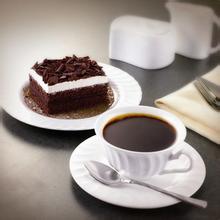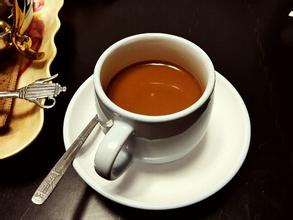Introduction to the characteristics of Peruvian Coffee Flavor and Taste
Introduction to the characteristics of Peruvian Coffee Flavor and Taste
The private Peruvian Coffee exporters Association (ComeradeExportadoresdeCafedelPeru) has been established, which is committed to improving the quality of coffee. Its primary task is to set standards and eliminate inferior products, so as to create an atmosphere of quality supremacy. This positive move heralds a bright future for the coffee industry. Since then, rising prices have encouraged farmers to actively grow coffee rather than the region's traditional cash crop-cocoa flavor: balanced taste and delicious acidity
Suggested roasting method: medium to deep roasting, can be made into high-quality mixed coffee suitable for various uses
★: general Peruvian coffee features:
Although its output ranking is lower than that of Brazil, the coffee beans are of good quality, rich and unique aroma, sweet in acidity and moderate bitterness, which is very suitable for single drink or mixture. Colombian beans and Brazilian beans are the best choice of basic beans for blended coffee, but their flavor is more mellow and more fragrant than Brazilian beans. In addition to individual taste, they are also often used to blend coffee to increase the sweetness of coffee and to blend the bitterness of other coffee.
Central Colombia is divided into valleys by three north-south longitudinal mountains, of which the central and eastern mountains are the main coffee producing areas. The coffee here is named after a distributed market, with Medellin, Armenia and Manizales in the Central Mountains and Bogota and Bucaramanga in the eastern mountains.
The best Colombian beans, similar to Costa rica or Hawaiian Cona beans, are non-extreme coffee, rich in texture, but not as strong as Sumatra; rich in aroma, but not as good as the best Jamaican alpine flavor; sour, but not as sour as Antigua acid. It often has a caramel-like taste, similar to the aroma of pudding, lack of sour fruit, reminiscent of milk pancakes; it is also suitable for blending mixed coffee. Since the 1970s, with the full promotion of the Colombian government, many old trees have been replaced by new species with high yields, but critics believe that the new coffee is milder and more common than the old ones, and its quality is much lower than it used to be.

Important Notice :
前街咖啡 FrontStreet Coffee has moved to new addredd:
FrontStreet Coffee Address: 315,Donghua East Road,GuangZhou
Tel:020 38364473
- Prev

Latin American Coffee Bean Characteristics Taste Treatment Flavor Description Region Variety
Latin American coffee bean characteristics Taste processing method Flavor description Region of origin Variety Costa Rica Aroma 3.5 points Brightness 4.5 points Full-bodied 3 points Flavor 4.5 points Aftertaste 4.5 points Suitable for roasting degree: Light/Medial/City If you want to show Costa Rica's perfectly balanced flavor, you must not roast deeply. It is recommended that the City degree be enough, even the first explosion can be finished.
- Next

Flavor description of Sidamo Red Cherry Plan Coffee beans
Sidamo Red Cherry Project Coffee Flavor description Grinding scale Variety operation Cherrie Red "Red Cherry Project" (ORC) is a project to improve the quality of small-scale farms, mainly to encourage soybean farmers and surprise roasters. Trabocca, the largest coffee bean seller in the Netherlands, invited all Ethiopian farms to produce small quantities of about 1500-3000 before the harvest season.
Related
- Detailed explanation of Jadeite planting Land in Panamanian Jadeite Manor introduction to the grading system of Jadeite competitive bidding, Red bid, Green bid and Rose Summer
- Story of Coffee planting in Brenka region of Costa Rica Stonehenge Manor anaerobic heavy honey treatment of flavor mouth
- What's on the barrel of Blue Mountain Coffee beans?
- Can American coffee also pull flowers? How to use hot American style to pull out a good-looking pattern?
- Can you make a cold extract with coffee beans? What is the right proportion for cold-extracted coffee formula?
- Indonesian PWN Gold Mandrine Coffee Origin Features Flavor How to Chong? Mandolin coffee is American.
- A brief introduction to the flavor characteristics of Brazilian yellow bourbon coffee beans
- What is the effect of different water quality on the flavor of cold-extracted coffee? What kind of water is best for brewing coffee?
- Why do you think of Rose Summer whenever you mention Panamanian coffee?
- Introduction to the characteristics of authentic blue mountain coffee bean producing areas? What is the CIB Coffee Authority in Jamaica?

